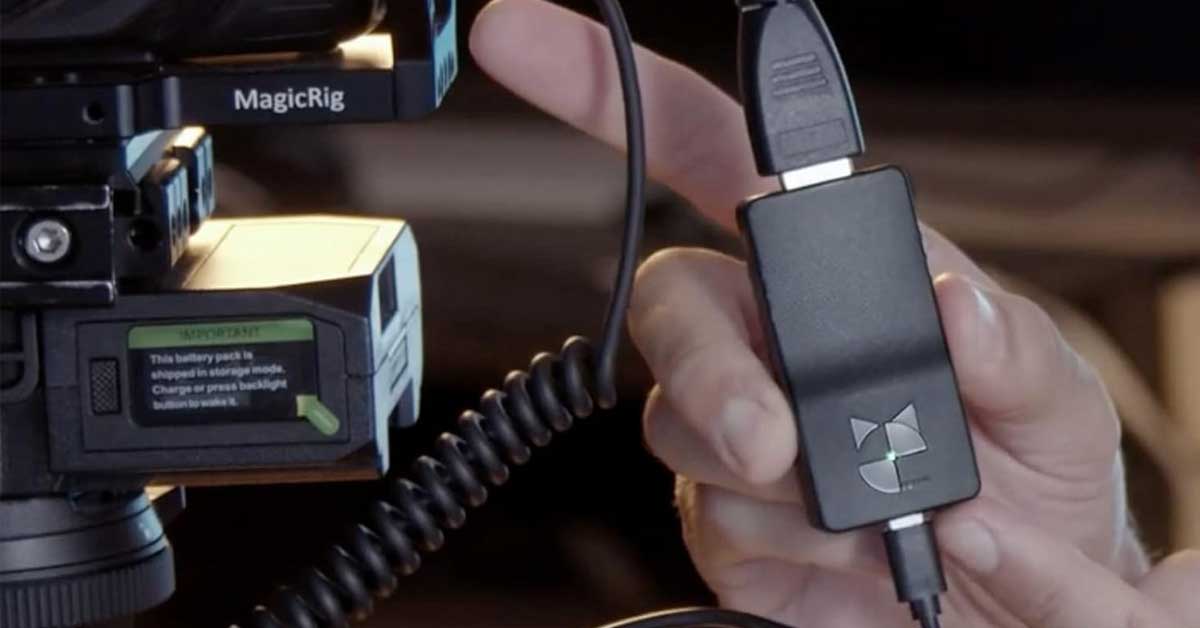In the ever-evolving world of live streaming and broadcasting, the right tools can make or break your experience.
Among these, HDMI IPTV encoders are crucial for anyone looking to deliver high-quality video content over the internet.
With the plethora of options available, choosing the right encoder can be daunting, to say the least.
Here are NerdTechy’s top picks:
| Encoder Model | Key Features | Video Quality & Protocols | Size & Portability | Notable Concerns |
| URayCoder | Juggles four streams, mix and match protocols, easy customization | 4K video quality, supports multiple protocols including RTMP, SRT, HLS | 6.1 x 6.02 x 2.05 inches; 12.6 ounces | Audio setup limitations, max 30fps at 4K |
| J-Tech Digital | Streams to 4 platforms simultaneously, professional-grade | Supports dual encoding, NDI HX2 protocol, customizable on-screen display | Small but mighty: 6.12 x 3.93 x 1.25 inches, 1.25 pounds | Connectivity can be temperamental |
| Iseevy | Supports 1080P and 4K inputs, compatible with multiple protocols | High-quality video and audio, supports H.265/H.264, AAC/MP3 | Compact and lightweight: 4.17 x 7.44 x 1.73 inches, 1.57 pounds | User interface could be more intuitive |
| DDMALL | Ultra-compact, simple plug-and-play, USB-powered | Supports various resolutions and streaming protocols, real-time OSD settings | Super lightweight: 2.6 x 0.8 x 0.5 inches; 0.882 ounces | Requires technical know-how, lacks direct social media integration |
1. URayCoder
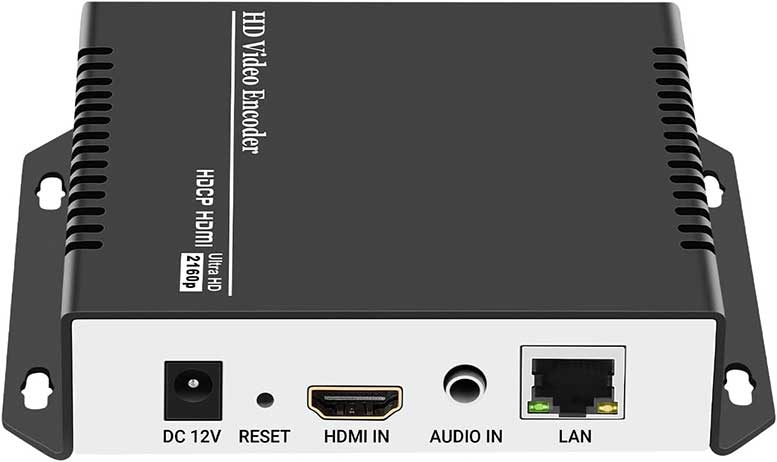
Key Takeaways:
- Juggle four streams effortlessly
- Mix and match streaming protocols
- Personalize your stream easily
- Crisp 4K video quality
- Audio setup could be better
The URayCoder HDMI Video Streaming Encoder is a tech enthusiast’s dream for live broadcasting. This compact device comes in at 6.1 x 6.02 x 2.05 inches, with a weight of just 12.6 ounces. And it certainly packs a punch with its ability to support 4K UHD video input and output.
Picture this: you’re streaming a live event on YouTube or Facebook, and the clarity is so pristine it feels like you’re right there. That’s the magic of 4K resolution at work. What sets the URayCoder apart is its versatility in streaming protocols.
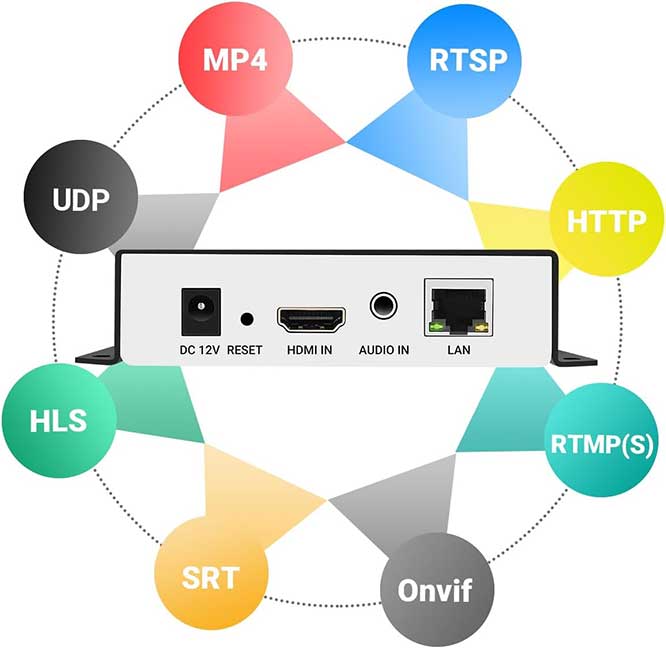
It’s not just about RTMP or HLS; this little powerhouse supports a wide range, from HTTP to SRT and even FLV. This means whether you’re a Twitch streamer or a professional broadcaster, you have the flexibility to choose your streaming protocol based on your needs.
Do you prioritize bandwidth efficiency or image quality? The URayCoder has you covered either way. Another standout feature is its multi-stream capability.
Have you ever wanted to broadcast to multiple platforms simultaneously? With the URayCoder, you can push your content to up to four different streaming servers at once. Imagine reaching audiences on Twitch, YouTube, and Facebook all at the same time.
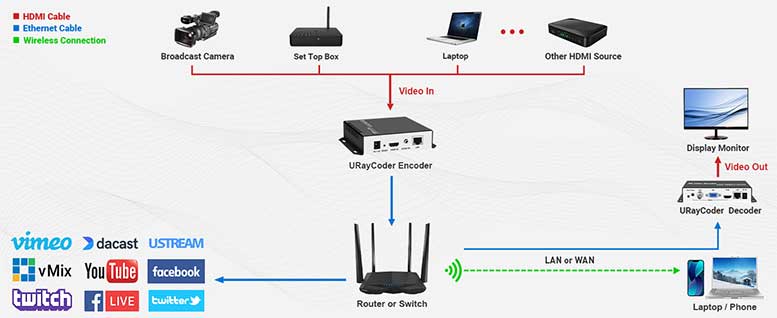
Customization is also a breeze. The device allows for various on-screen display settings, like adding logos or scrolling text. This feature came in handy during our test broadcasts, where we could brand our content effortlessly.
And for those worried about audio, the URayCoder supports both HDMI-embedded audio and external audio inputs, offering flexibility in audio sources.
However, it’s not without its limitations. The device struggles with multi-channel audio inputs like AC3 or LPCM. We found ourselves using an audio extractor to ensure compatibility.
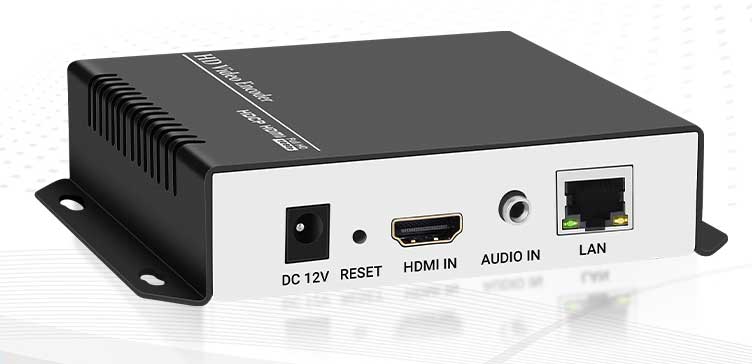
Also, while it supports 4K resolution, the maximum frame rate caps at 30fps, which might be a downside for those seeking ultra-smooth video playback.
Overall, the URayCoder is a robust tool for anyone serious about live streaming, offering a range of features that cater to both amateurs and professionals.
2. J-Tech Digital
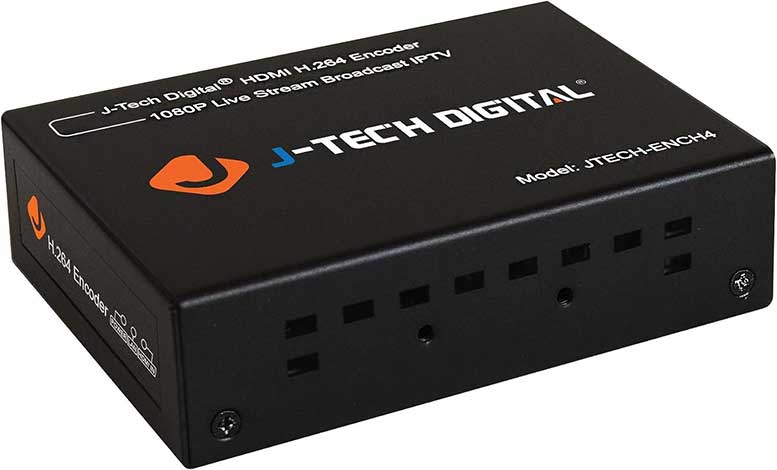
Key Takeaways:
- Streams to 4 platforms simultaneously
- Embeds analog audio seamlessly
- Customizable on-screen display
- Can be temperamental at times
- Professional-grade streaming tool
When we got our hands on the J-Tech Digital HDMI IPTV Livestream Encoder, it felt like uncovering a secret treasure. It’s a small but mighty device, clocking in at 6.12 x 3.93 x 1.25 inches and weighing a mere 1.25 pounds.
This encoder is perfect for folks passionate about live streaming. Playtime with this encoder had us constantly on our toes. Its dual encoding options kept the balance beautifully between saving data and delivering top-notch image quality.
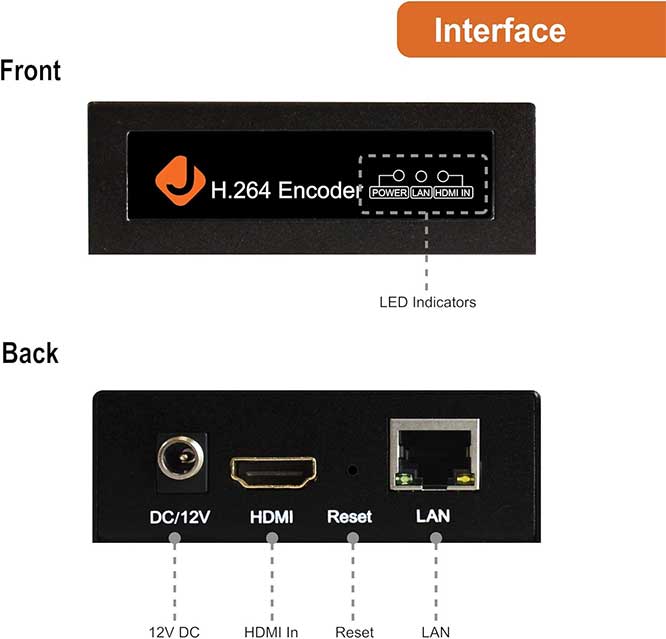
We were particularly impressed by its analog audio embedding feature – it’s a dream come true for live events where audio is piped in from a separate mixer.
Plus, if you’re running an NDI-based setup, this little gadget will slide right in thanks to its support for NDI HX2 protocol.
But what really blew us away was its ability to stream to four different platforms at once. We put it through its paces on YouTube, Facebook, and Twitch, and it converted our humble setup into a scaled-down broadcast station.
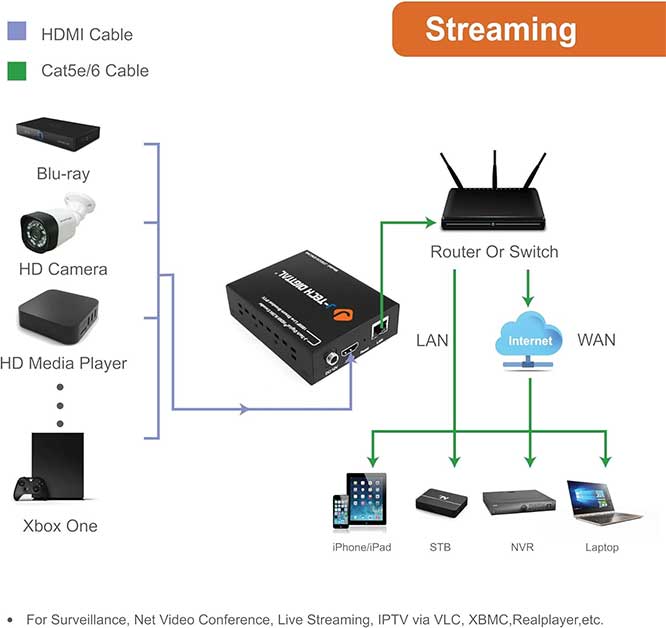
It’s not flawless, though. We found that its connectivity can be a bit temperamental. At times, it linked up instantly; other times, it needed a reset or a swap of streaming keys. It’s a bit of a hiccup, but nothing major. We love the personal touch it brings.
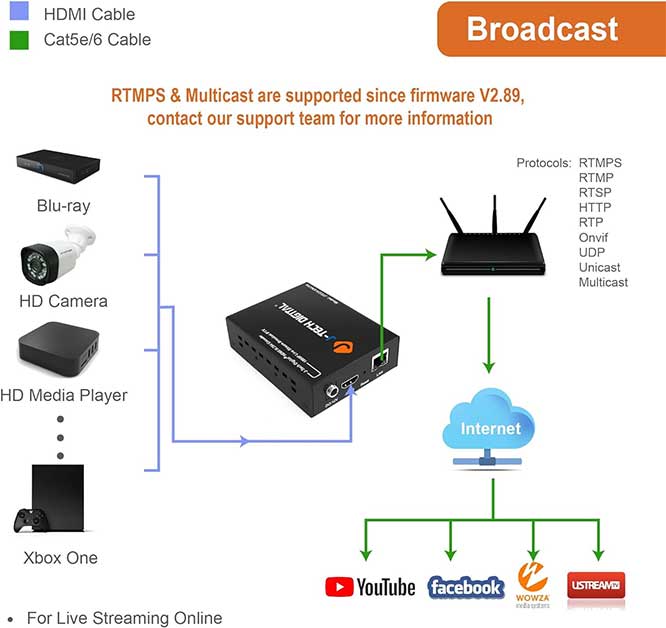
With it, we could craft custom on-screen messages and make our own “no signal” graphics. It’s these small things that take a stream from the realm of the hobbyist to professional grade.
Would we recommend the J-Tech Digital HDMI IPTV Livestream Encoder? Without question. It’s a reliable, heavy-duty tool that will ramp up your live-streaming game. Just be prepared for the occasional blip along the way. Overall, it’s a fantastic addition to any serious live-streaming setup.
3. Iseevy
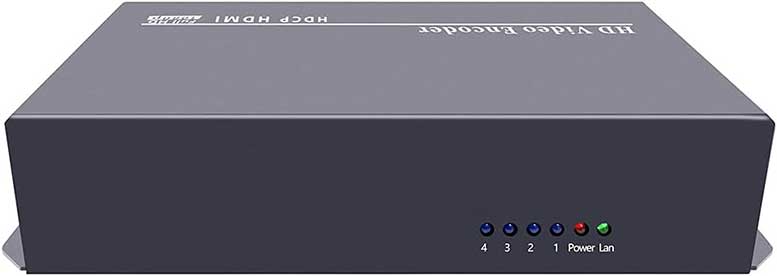
Key Takeaways:
- Supports 1080P and 4K inputs
- High-quality video and audio streaming
- Compatible with multiple streaming protocols
- Useful for simultaneous multi-platform streaming
- Could benefit from a more user-friendly interface
Have you ever found yourself juggling multiple devices and software to live-stream efficiently? The Iseevy HDMI Video Encoder might just simplify your setup.
This nifty device caught our attention for its versatility in handling various streaming protocols and platforms. But how does it fare in real-world use? Firstly, the encoder’s ability to support both 1080P and 4K inputs is a boon for streamers looking for high-quality broadcasts.
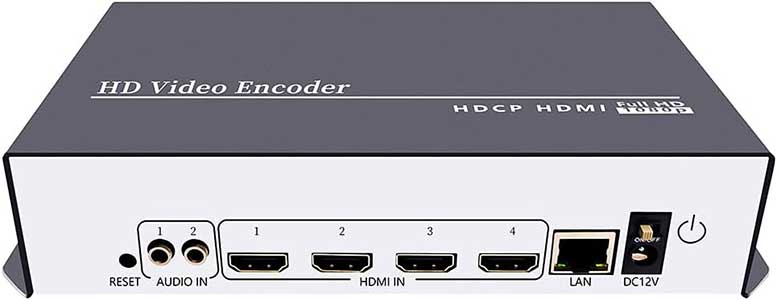
During our testing, switching between 4-channel 1080P and 2-channel 4K inputs was seamless, making it a reliable choice for dynamic streaming needs.
The video quality, thanks to the H.265 and H.264 video compression, was impressive, maintaining clarity even with fast-moving content. Audio-wise, the AAC/MP3 compression works well. We streamed a concert, and the audio was crisp, clear, and well-synced with the video.
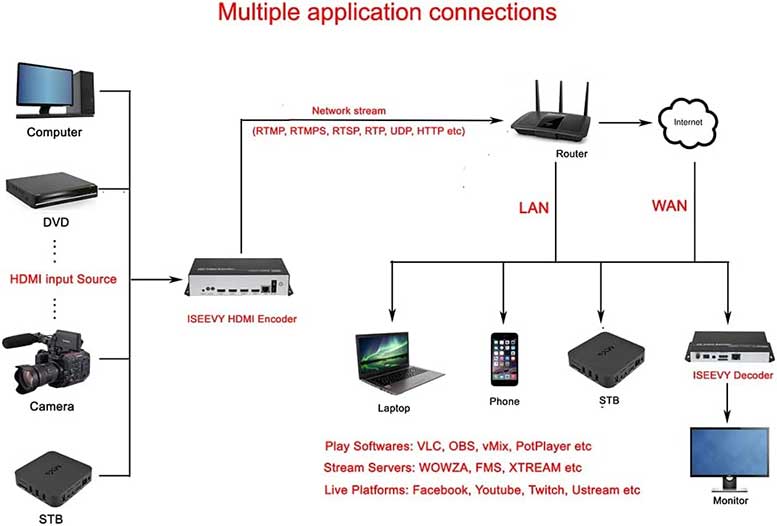
The encoder’s various audio inputs, including HDMI-embedded audio, offer great flexibility for different audio setups. The real standout feature is the encoder’s compatibility with a myriad of streaming protocols like RTMP, RTMPS, SRT, and more.
It allowed us to stream to different platforms simultaneously without a hitch. This feature is especially useful for content creators who engage with audiences across various platforms.
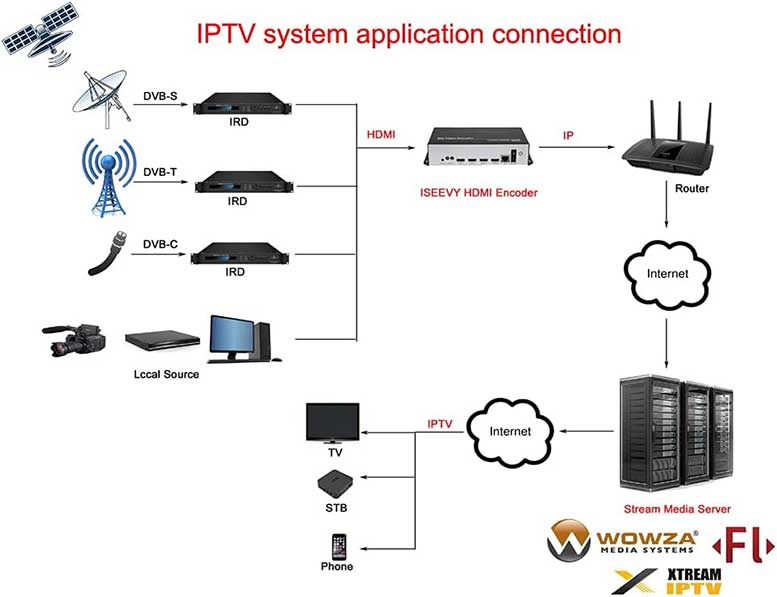
Additionally, the encoder’s compact size (4.17 x 7.44 x 1.73 inches) and light weight (1.57 pounds) make it portable. This is great for streamers who need a mobile setup. However, we did find the web configurations a bit daunting initially.
A more intuitive interface would be a welcome improvement. So in summary, the Iseevy HDMI Video Encoder is a robust tool for streamers seeking quality and versatility. While it has a slight learning curve for beginners, its performance in our tests was solid.
4. DDMALL
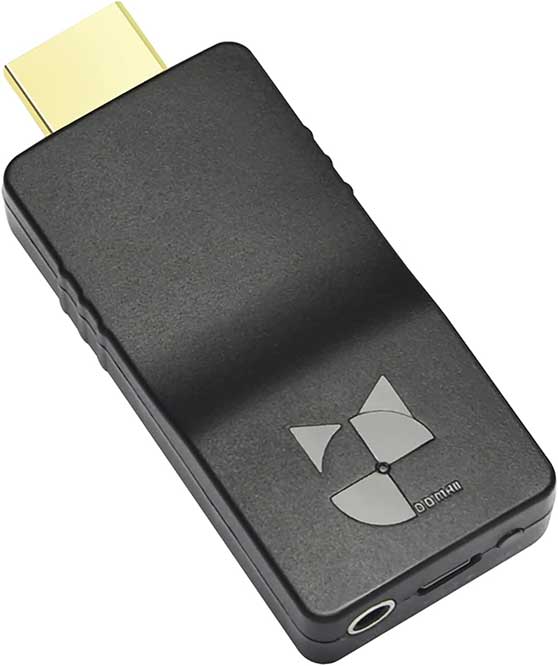
Key Takeaways:
- Ultra-compact and lightweight for mobility
- Simple plug-and-play, USB-powered setup
- Requires technical knowledge for optimal use
- Compatible with major streaming platforms
- Lacks direct social media post-integration
The DDMALL HEV-2KW Encoder marks a significant stride in the realm of live streaming. Its ultra-compact design and lightweight nature are a boon for those who find themselves constantly on the move or working in constrained spaces.
It measures 2.6 x 0.8 x 0.5 inches and weighs only 0.882 ounces. Now, onto utility. Imagine the ease of streaming live wildlife photography without the cumbersome setup of a laptop and cables. This is where the HEV-2KW shines, simplifying the process considerably.

Setting up this device is a breeze, thanks to its user-friendly interface. The plug-and-play feature, with USB power support, eliminates the need for extra cables or adapters.
It’s remarkable how such a small gadget can power through long streaming sessions, drawing energy directly from the HDMI port or a USB power bank. However, it’s worth noting that a certain level of technical know-how is required to get the most out of it.
Understanding Wi-Fi networking is essential for seamless integration into your streaming setup. The encoder’s versatility is commendable. It supports a range of resolutions and streaming protocols, making it compatible with various platforms like YouTube, Facebook, and Twitch.
The real-time OSD settings and video preview via web UI add a layer of professionalism to your streams, allowing for logo, text, and image overlays.
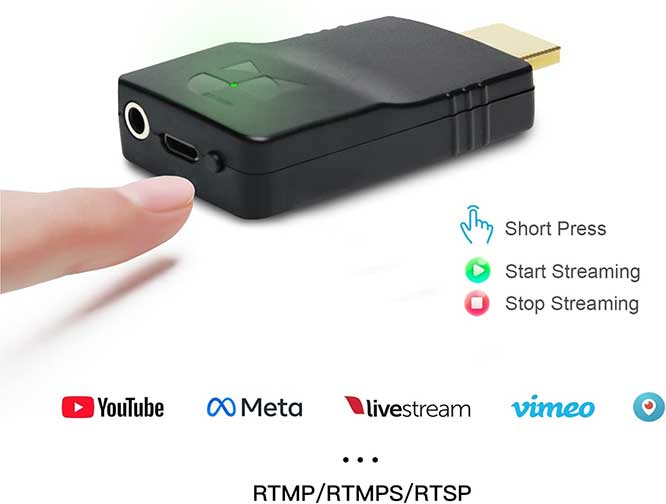
However, it’s not all smooth sailing. The absence of direct integration for creating posts on platforms like Facebook means you still need a device to handle the social media aspect of streaming.
But once set up, the encoder remembers your settings, sparing you from repetitive configurations. In our tests, the DDMALL performed reliably, streaming high-quality video without hiccups. Its one-click streaming feature proves invaluable during live events, where time is of the essence.
Though compact, this encoder packs a punch, delivering up to 2K streaming with efficient HEVC and AVC compression.
H265 and H264 HDMI IPTV Encoder FAQs
What is the Difference Between H265 and H264 Encoding?
H265, also known as HEVC (High-Efficiency Video Coding), is the successor to H264 (AVC, Advanced Video Coding).
The main difference lies in compression efficiency, with H265 providing better compression at the same level of video quality or higher quality at the same bit rate compared to H264. This means H265 is more efficient in bandwidth usage, ideal for 4K streaming.
Can These Encoders Stream to Multiple Platforms Simultaneously?
Yes, many modern HDMI IPTV encoders, like the URayCoder and J-Tech Digital models we reviewed, support multi-platform streaming.
This feature allows users to broadcast their content to various platforms like YouTube, Twitch, and Facebook simultaneously, expanding their reach.
Are These Encoders Suitable for Professional Broadcasts?
Absolutely. Encoders like the J-Tech Digital and EXVIST are designed with professional-grade features, offering high-quality video streaming, robust protocol support, and advanced functionalities like dual encoding and analog audio embedding.
These make them suitable for various professional applications, including live events, webinars, and telemedicine.
Meet Ry, “TechGuru,” a 36-year-old technology enthusiast with a deep passion for tech innovations. With extensive experience, he specializes in gaming hardware and software, and has expertise in gadgets, custom PCs, and audio.
Besides writing about tech and reviewing new products, he enjoys traveling, hiking, and photography. Committed to keeping up with the latest industry trends, he aims to guide readers in making informed tech decisions.

